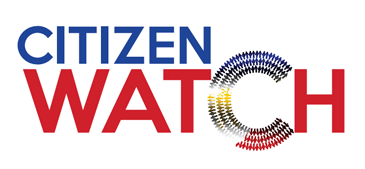E-commerce boomers
October 18, 2021by Orlando Oxales originally published in The Manila Standard
“What’s your fintech experience during this pandemic?”
E-Commerce is booming in the Philippines. Online transactions became the lifeline to pandemic survival as it became and is the safest and most convenient mode of consumer purchases. Connecting to the internet through our mobile devices has become indispensable for the continuity of everything.
Department of Trade and Industry (DTI) data show businesses doing retail online increased to 80.2% in 2021 owing to massive shifts not just in retail transactions but also in delivery services, online entertainment, and telehealth consultations. DTI sees that by 2022 there will be one million e-commerce businesses registered and hopefully boosting the country’s gross domestic product.
In last week’s news reports, Filipinos were ranked the Asia Pacific Region’s top “e-cash adopters” in a study from global cybersecurity firm Kaspersky. The study said that the Philippines topped the list at 37% followed by India (23%), Australia (15%), Vietnam (14%), Indonesia (13%), Thailand (13%), and Singapore (11%).
Come to think of it, these developments match well with my own personal pre- and post-pandemic buying and banking habits. Before the lockdowns, my payments were usually by cash, check, or credit card swipes. Though I’ve been doing some online purchases before COVID-19, these were few, very cautious transactions through the e-commerce platforms — and not all of them went well. Financial institutions were also tentative in going digital.
The pandemic actually forced us to jump in and trust digital transactions simply because it is the best way to safely, and what we all pleasantly discovered, very conveniently get what we need. Online shopping and e-banking have actually improved so much, and are preferred especially by people like me who must be extra careful because of co-morbidities. Though fully vaccinated, going to the mall or anywhere outside the home must have a compelling reason. Actually, it’s been a long time since I went to an ATM machine to put some cash in my wallet. I even had to reset my password because I had forgotten it.
The Philippine telcos are likewise seeing this surge of e-commerce users as more brick-and-mortar establishments are now developing their online stores and millions of households whose livelihoods have been affected are now selling all sorts of goods using online and e-payment platforms just to make ends meet.
According to Globe Telecom Senior Vice President and Chief Sustainability Officer and Head of Corporate Communications, Ma. Yolanda Crisanto, during the recent Digital Readiness virtual forum hosted by Stratbase ADRi, there will be sustaining growth of e-payments through their GCash and other platforms as internet penetration, now at 65%, the proliferation of digital apps being adopted by consumers, and the digital transformation of MSMEs (Micro, Small and Medium Enterprises) into a more digital ecosystem becomes a standard business strategy.
The Kaspersky study also revealed that out of 1,618 Asian respondents, though 90 percent used mobile payment apps at least once in the last 12 months, 70 percent still pay by cash for their daily purchases while mobile banking apps are fast catching up at 52 percent and mobile payments at 58 percent, with respondents saying they use them at least once a week. In my experience, Fintech (financial technology) transactions are already dominant over cash.
Digital transactions definitely work, but there is still hesitation because of the risk of fraud and theft of sensitive personal information exposing one’s vulnerability to scams or other forms of cybercrime. This is one critical aspect of digital readiness often neglected — we become so focused in successfully consummating or achieving the objective of our e-transactions and forget about safe practices when making online payment. The Kaspersky study actually reported 26 percent of the respondents saying that fintech is “troublesome” because of passwords and security checks in their system. On the other hand, 25 percent of the respondents think that their digital devices may not be secure.
Experts say, and I agree, that e-commerce and the connected platforms of fintech have definitely arrived and will see expanding utilization as more consumers are connected by more extensive and faster broadband services. The gains we have so far in internet speed and reach have been driven by the private telcos’ aggressive investments in mobile and fiber optic networks.
As this administration failed to do its part in investing in urgent digital infrastructure programs of the National Broadband Plan, it will be for the next government to develop this strategically critical pillar of the country’s digital transformation not just to sustain an ecosystem for economic recovery, but most apparent from the raging controversies, a systemic transformation of the country’s governance system.
In Stratbase ADRi president Prof. Dindo Manhit’s recent statement on digital readiness, he said that “in a new digital ecosystem, we need leaders for digital transformation. Champions in both the private and public sector that can inspire innovations that would integrate the disconnect between processes, policies, and even flaws in governance that have been exposed.”
